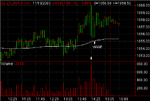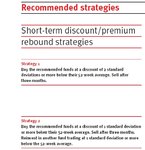Could someone be kind enough to explain how exactly you use volume as part of a trading strategy. I currently daytrade with MACD and Stochs.
I have read many posts of experienced traders who have dropped all indicators and trade on price/volume alone. However, looking back through various charts I have seen that high volume does not necessarily result in significant price moves and that low volumes can create large moves....and vice versa.
Admittedly, these charts aren't differentiating between sell volume and buy volume, is this the key? Also, what levels of increased volume (in general) would indicate that the corresponding price action will be sustained and constitutes a lower risk entry.
And lastly, for daytrading, what form of streaming data is recommended to indicate sell/buy volume (stocks not indices). Many thanks.
I have read many posts of experienced traders who have dropped all indicators and trade on price/volume alone. However, looking back through various charts I have seen that high volume does not necessarily result in significant price moves and that low volumes can create large moves....and vice versa.
Admittedly, these charts aren't differentiating between sell volume and buy volume, is this the key? Also, what levels of increased volume (in general) would indicate that the corresponding price action will be sustained and constitutes a lower risk entry.
And lastly, for daytrading, what form of streaming data is recommended to indicate sell/buy volume (stocks not indices). Many thanks.


